Even if you're only a sometime gardener, the arrival of spring will probably give you the urge to get some seeds into the ground. That leads to the question of what to grow? The most iconic spring vegetable is asparagus, but that's not something you plant on the spur of the moment: it takes years to establish a bed. Instead, we've chosen five versatile, popular vegetables that can be planted before the last frost and give you an early harvest, so you can scratch that itch for fresh spring vegetables as soon as possible.
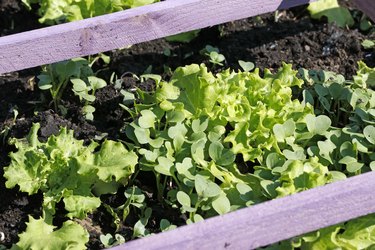
Video of the Day
1) Radishes
If instant gratification is your thing, radishes are as close to it as you can get in the garden. Many varieties are ready to pick in as little as 3 weeks! Choose from heirlooms like Cherry Belle or French Breakfast, or exotic "watermelon" radishes with their vivid pink interior. Harvest them at about an inch in diameter, or slightly larger for watermelon radishes. Eat the roots fresh, either as-is, in salads or in stir-fries. They're mild and sweet if boiled or steamed, and they can also be pickled. Don't discard the tops: they can be steamed or boiled like other greens, or quickly sauteed to keep a bit of their peppery bite. Done that way, they're a great complement to rich ingredients like pork, salmon or cheese.
Video of the Day
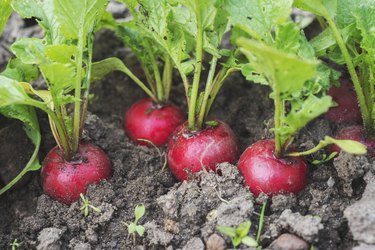
2) Spinach and Other Greens
Radishes are the sprinters of the garden world, ready at 3 to 4 weeks, but spinach isn't far behind at 5 to 6 weeks. You can harvest it early as baby spinach or let it come to full size, just as the warm weather arrives. That's important, because once the weather warms up your spinach will bolt (go to seed). Kale and chard can be started early as well, and either harvested as baby greens or as full-sized leaves all season long. The secret is to harvest continuously ("cut and come again") by snipping one outer leaf at a time from each plant, rather than taking the whole head at once. Baby greens are great in salads or omelets, and mature leaves can be steamed, boiled or sauteed.
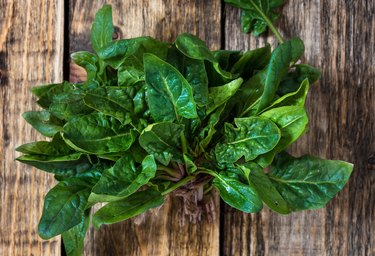
3) Peas
Fresh peas are as sweet as anything the garden offers, so it's a real bonus that they're also one of the earliest vegetables at 6 weeks or thereabouts. You can plant the flat-pod Asian-style snow peas, snap peas (which also have edible pods, but bigger peas) or regular shelling peas, or any combination of the three. Shelling peas take the longer to mature, at 9 to 10 weeks, but you can harvest them a bit early while they're still "baby peas" or just shuck some snap peas instead. All three kinds benefit from some sort of trellis. Edible-pod varieties are excellent steamed or in stir-fries, while baby peas are wonderful simply steamed with butter. A few shreds of fresh mint make a nice accompaniment, too.
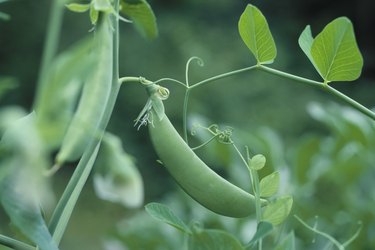
4) Lettuces and Salad Greens
If you love salads, it's amazing how much you can save by growing your own lettuces. There are many, many kinds to choose from: iceberg and Romaine, leafy red, delicate Buttercrunch and many more. Most leafy types can be harvested continually for weeks on a cut-and-come-again basis, sometimes starting as early as 4 to 5 weeks, but if you prefer, you can plant every couple of weeks all spring and harvest full heads. Don't forget to add complementary fast-growing salad greens like peppery mizuna or delicate mache, or alternatively you could just buy a commercial mesclun mix (a.k.a. "spring mix") that has everything in it already.
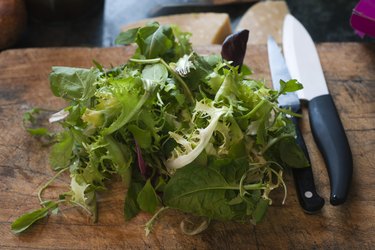
5) Kohlrabi
Kohlrabi isn't just a cool-season vegetable, it's one of the coolest-looking vegetables as well. Its leaves make a crown around the ball-shaped stem, giving the whole thing a slightly alien appearance. They'll mature in 6 to 7 weeks, but you can also harvest them at the "baby" stage when they're the size of golf balls. They have a sweet brassica flavor (like broccoli) which lends itself to a lot of meal ideas. Have it shaved in salads or shredded in slaws, pickled or quick-pickled in sandwiches or on a cold plate, sliced or shredded in stir-fries, or steamed as part of a spring-vegetable medley. Baby kohlrabi can be eaten whole, but the skin becomes fibrous as they mature so they're better peeled when full-sized. Oh, and the leaves can be eaten as well. Steam them or sauté them like kale.
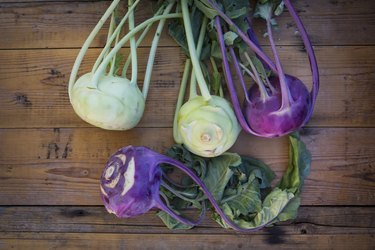
These are just a few of your springtime vegetable options. You could just as easily swap in buttery-sweet spring turnips for the kohlrabi, or sow beets as part of your collection of greens (Early Wonder Tall Top is a great option) and treat the summertime harvest of actual beetroots as a bonus. If you're really impatient, you can order bulk packs of seeds for peas, radishes, or other greens and harvest them as thumbnail-sized micro-greens right from your sprouting kit or seed starting tray. Knock yourself out, it's spring!